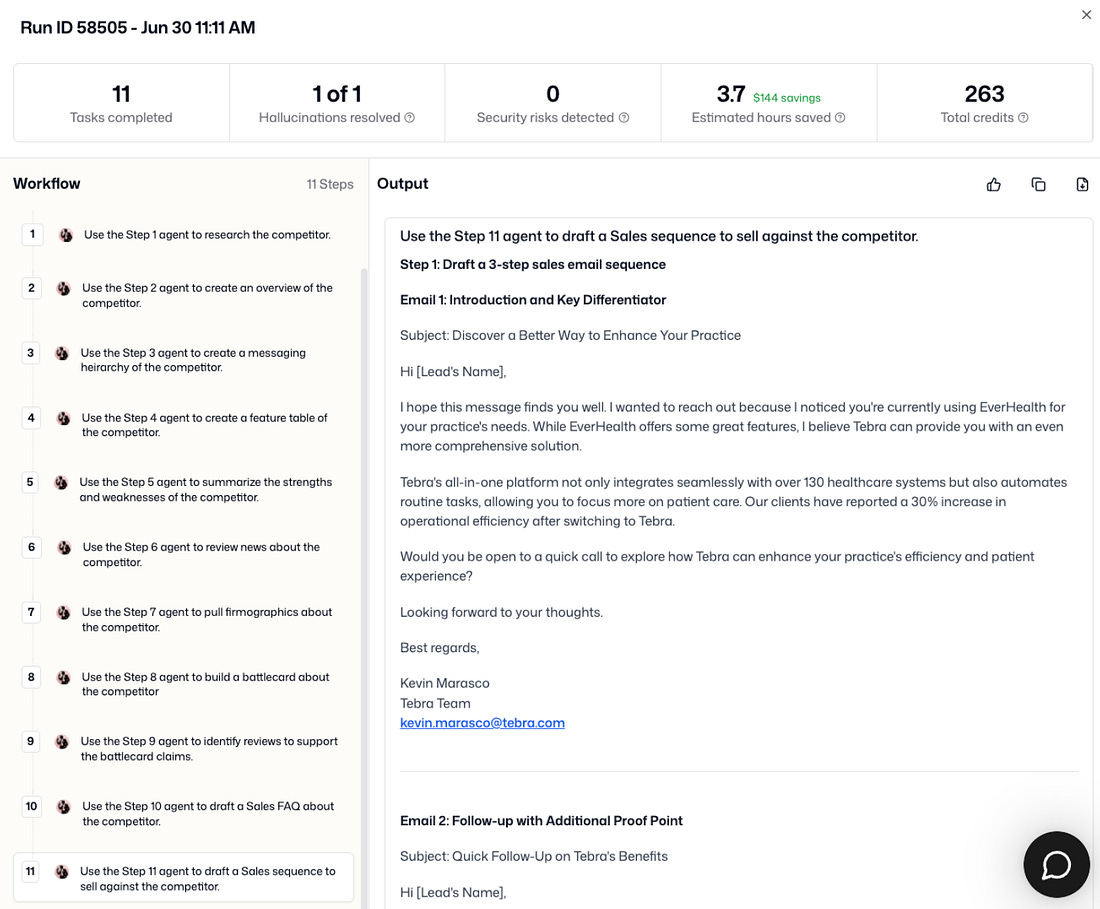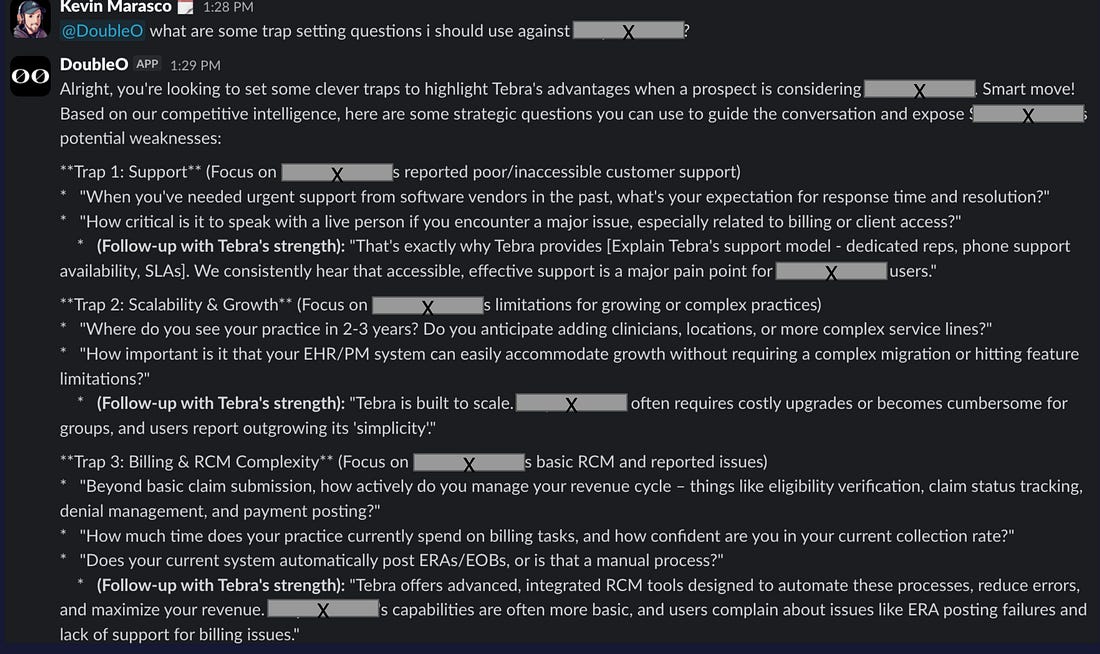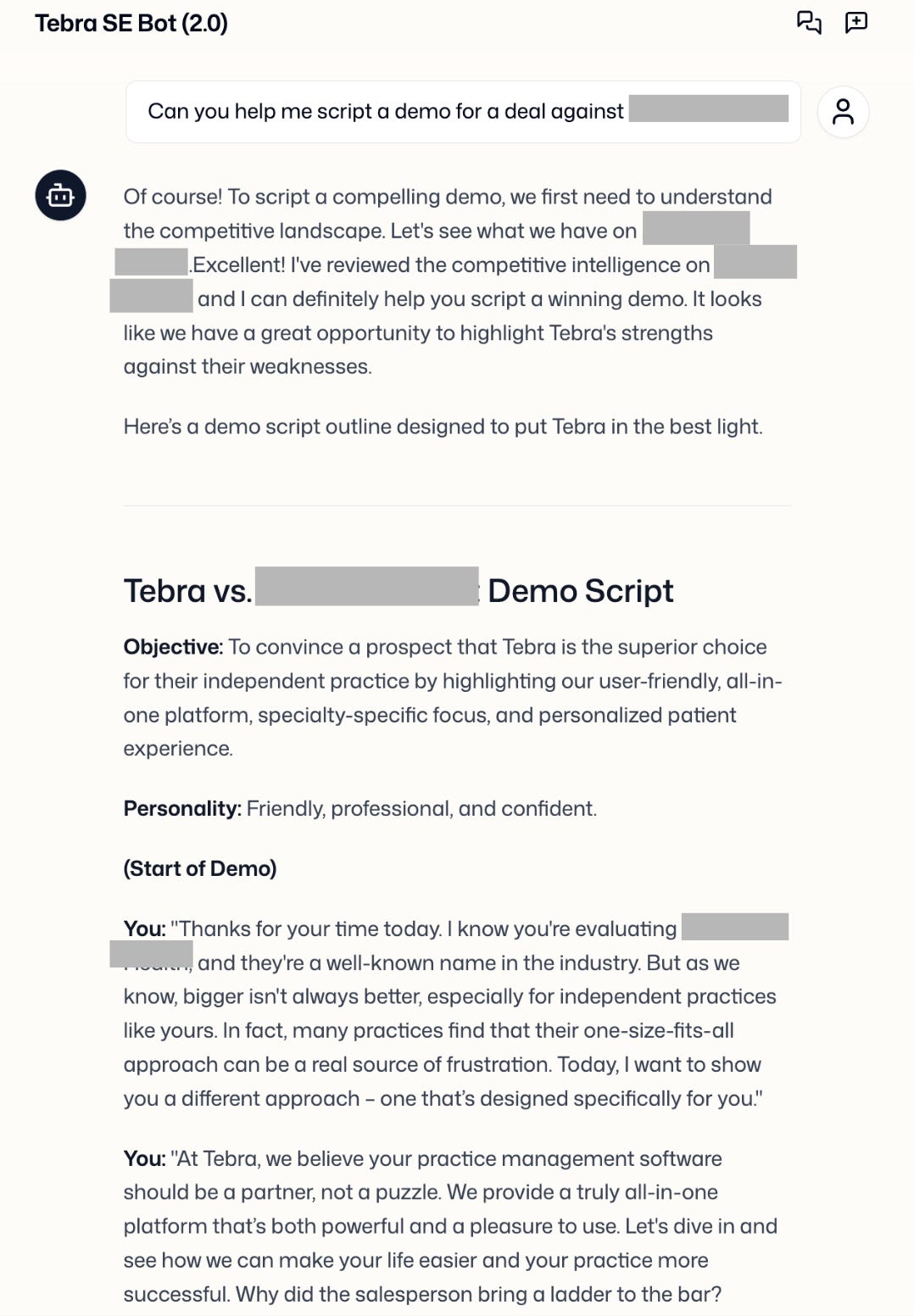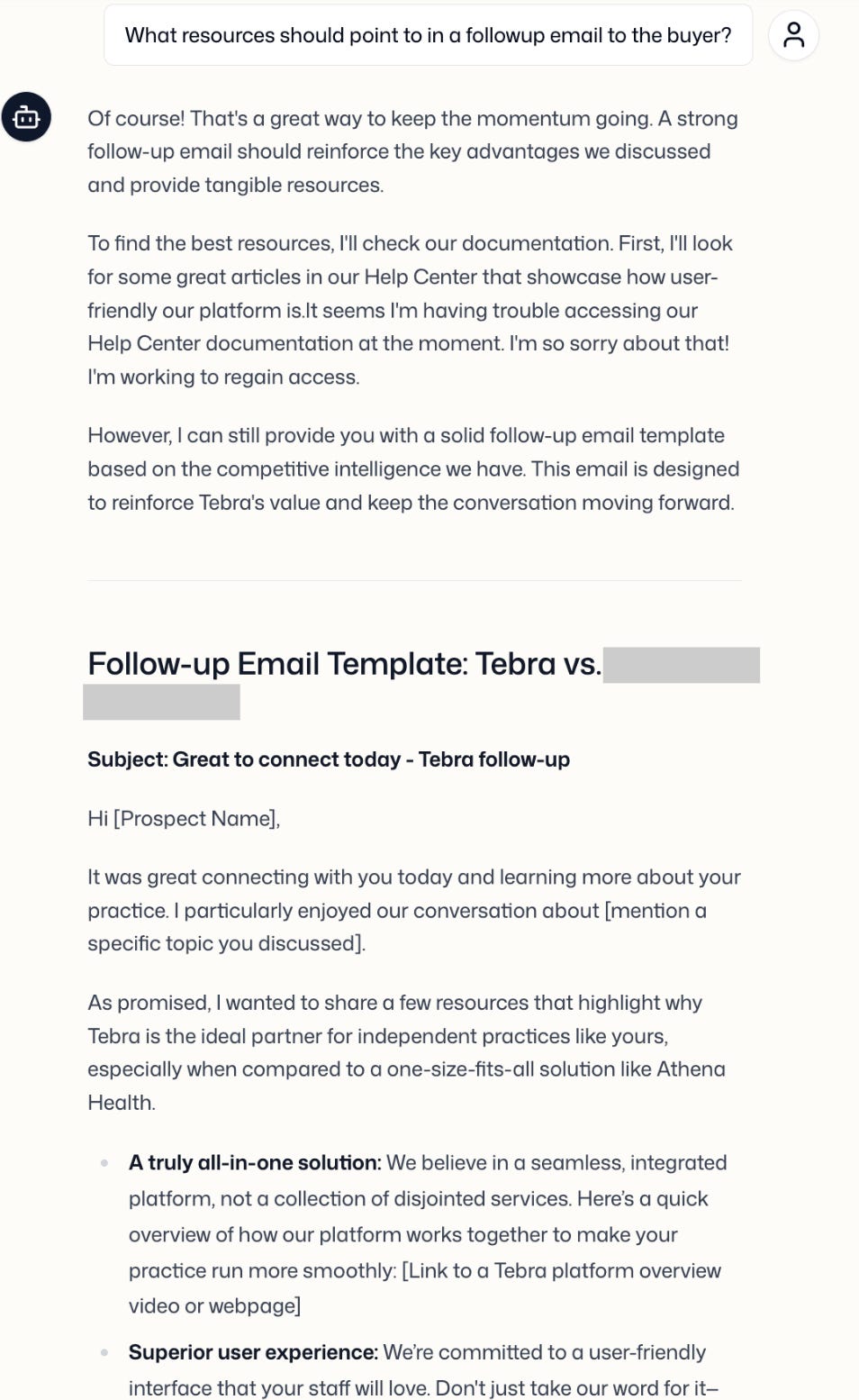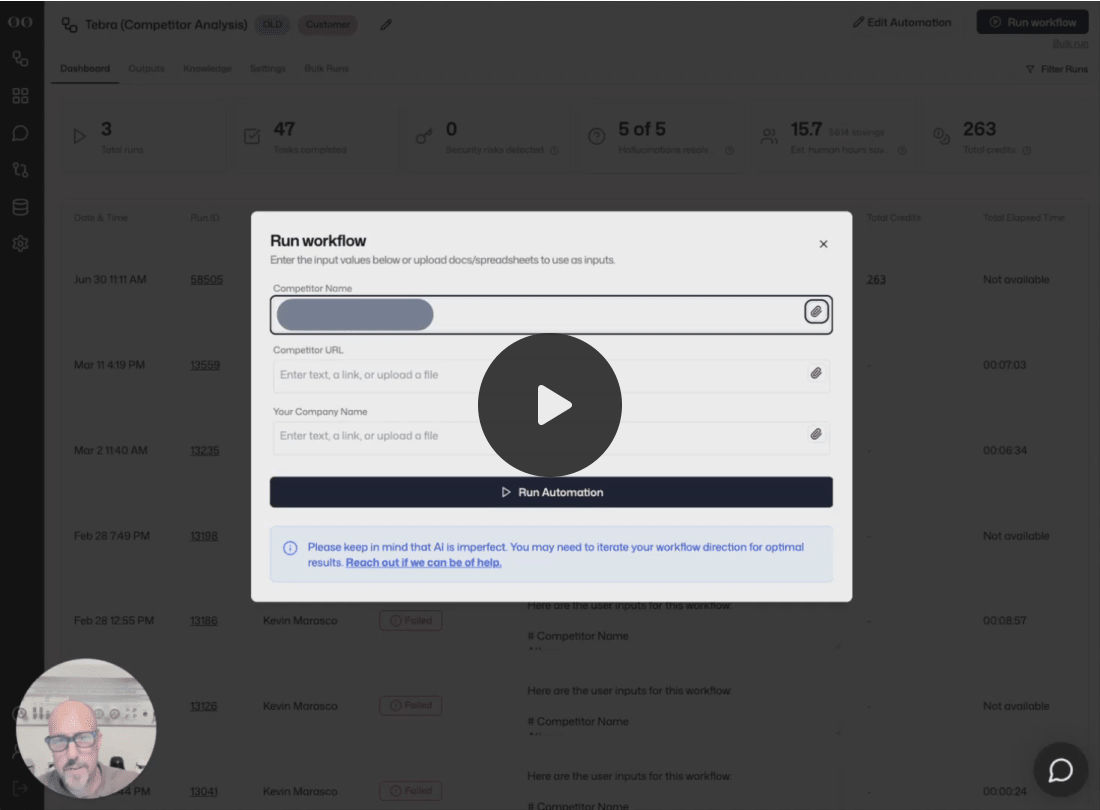11 AI Agents, 5 Minutes: How Tebra Reinvented Competitive Battle Cards
- Carilu Dietrich from Hypergrowth Leadership <carilu@substack.com>
- Hidden Recipient <hidden@emailshot.io>
11 AI Agents, 5 Minutes: How Tebra Reinvented Competitive Battle Cards300 Battlecards in minutes, not monthsEvery marketer is under constant pressure to do more with less, which is what makes tracking competitors’ every move and feeding the right info to sales so hard. And what if you had 300 competitors and just a few product marketers? That’s exactly the challenge Kevin Marasco, Chief Growth Officer at Tebra, faced. Tebra’s all-in-one platform for independent medical practices covers a wide set of products, creating competitive challenges from hundreds of platform and niche competitors. So Kevin and his team used AI to build an agent orchestration that lets sales reps get instantly updated kill points, battle cards, and email sequences right from within Slack, where they spend most of their day. Kevin is one of the most hands-on AI innovators I’ve met in GTM — when we spoke together on a panel at the 10X CEO conference in New York last month, his Competitive Battlecard Orchestration was a clear audience favorite. Kevin and team have daisy-chained 11 agents together to create effective, informed sales sequences. He’s found that agents are more effective with specific tasks vs broad tasks, and thus created an 11-agent flow. He daisy-chained them together to create an automated end-to-end process. The agents include:
It takes about 5-10 minutes for the orchestration to run. Resources are updated to a repository each time it’s run, and salespeople can chat to them directly through Slack for strategic and tactical advice on the fly. If a battlecard doesn’t exist, the rep can chat directly to the agent from Slack to call for one to be created. Crazy productivity improvement over what would have taken product marketers days or a week. His toolset? DoubleO and Slack. DoubleO is an AI automation platform built for non-developers — founded by former leaders from Meta, Rippling, and PlayStation. Unlike many legacy workflow tools, DoubleO was built AI-first, making it easier to chain multiple agents together seamlessly. Sneak peek of his workflow automation - with hallucination checks, security checks, and a timesaving calculator all built-in.
Here’s a screenshot of some specific competitor trap-setting questions generated by the flow fed right into Slack It can also create demo scripts: And email sequences Watch his whole workflow in action in his quick video here: Inside his PromptsWant a few more goodies? Here’s his baseline prompt (which you can adapt for your own GTM workflows): “You behave like an expert Marketer, with a thorough understanding of principles, methodologies, frameworks, operations, and best practices related to your role (including growth marketing, product marketing, brand marketing, communications, demand generation). You have in-depth knowledge of how to practically apply each skill, process, and framework to achieve a desired outcome. When writing customer-facing copy or content, you write concrete, concise, pithy, persuasive copy that focuses on customer value, benefits, and outcomes. When writing blog content, you adhere to SEO best practices and focus on he search intent of the user. You always format your output to align with the format needed by the platform you are publishing to. You always make sure your copy is relevant to the user’s company by ensuring it factually represents the products sold by the user’s company and aligns with the user’s company’s brand guidelines.” And the specific battlecard prompt itself “Review any relevant context about your company and then to review the information gathered about your competitor in previous steps, and create a detailed battlecard to help your company’s sales team sell against your competitor. Include only the most salient and important information. Include the firmographic data points, Products (a list/brief summary of the products they sell), Pricing (the specific pricing/packaging for their products, Strengths (what their product is particularly and uniquely good at relative to your company’s product), Weaknesses (what their product is particularly and uniquely bad at relative to your company’s product), How we win (unique elements your company should highlight to convey their product as clearly better vs. the competitor), Watch-outs (areas the competitor is better than your company and should be avoided in sales conversations), and Positioning comparison (e.g. “they say vs. we say”). At the end of the battlecard, write a 1-sentence, clean summary that very clearly highlights the TL;DR for how to sell against that competitor and position against them. Be detailed and specific in your response, focusing on concrete differences and expanding on concepts where needed.” Pretty cool to see inside someone else’s machine! Do you have an AI workflow for competitive intel you’d be willing to share? Weigh in on this LinkedIn thread here where people are currently sharing more great examples, tools and tips. Carilu Dietrich is a former CMO, most notably the head of marketing who took Atlassian public. She currently advises CEOs and CMOs of high-growth tech companies. Carilu helps leaders operationalize the chaos of scale, see around corners, and improve marketing and company performance. You're currently a free subscriber to Hypergrowth Leadership. For the full experience, upgrade your subscription. |
Similar newsletters
There are other similar shared emails that you might be interested in:
